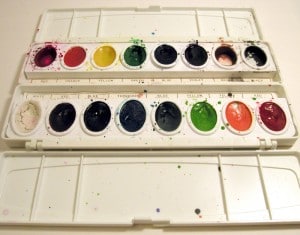The Nature of Art

The opening line of Anne Lamott’s writing memoir Bird by Bird states, “The very first thing I tell my new students on the first day of a workshop is that good writing is about telling the truth.”
As a Christian writer, I often wonder at how truth in fiction is achieved. After studying the parable of the talents, I concluded that God fashioned me as a writer so I could use my talent for His glory. It’s a good answer as far as it goes, but how does that work exactly? Do I look for truth in story ideas as they occur to me, or does the message come first, with a story built up around it? Where are the hinges; which pieces move and which are fixed in place? What is the purpose of fiction? The essence of imagery? The scope of creativity? The nature of art?
The Creation story in Scripture provides a clue, as the first image was man, made in the likeness of God (Genesis 1:26) and which, when we “put on the new self” in Christ, reflects “righteousness and holiness of the truth” (Ephesians 4:24). If we ourselves are the art of God, then creative works, from the beginning, are not devoid of meaning. Is that meaning knowable?
I searched out thoughts on other art forms. A curriculum statement by Julian Bowker, released in 1991 by the British Film Institute, can be used to parse this big question with smaller ones – pointed questions which could apply to any art or media: “WHO is communicating, and why? WHAT TYPE of text is it? HOW is it produced? HOW do we know what it means? WHO received it, and what sense do they make of it? HOW does it PRESENT its subject?”
These questions bring to mind that while the purpose of art may be subjective to the artist, the nature of art is the mingling of form and function, of medium and message. In Film Art: An Introduction, authors David Bordwell and Kristin Thompson point out, “The mind is never at rest. It is constantly seeking order and significance, testing the world for breaks in the habitual pattern. Artworks rely on this dynamic, unifying quality of the human mind.” Even more simply put, in a beginners’ photography guide, Michael Langford writes, “I believe the main benefit of photography is the way it enhances how you see the world. You become more conscious of lighting, depth and distance, the influence of colors, the way in which one element directs your attention to another.”
Though some produce art for its own sake, I believe that in humanity’s search for meaning, art naturally directs attention to matters greater than itself. It points, hopefully toward a worthy subject. As shadows and copies hint at the form of their origins, so might art tease at truth. Hebrews 8:4-6 alludes to this in discussing the ministry of Jesus: “Now if He were on earth, He would not be a priest at all, since there are those who offer the gifts according to the Law; who serve a copy and shadow of the heavenly things, just as Moses was warned by God when he was about to erect the tabernacle; for, “See,” He says, “That you make all things according to the pattern which was shown you on the mountain.” But now He has obtained a more excellent ministry, by as much as He is also the mediator of a better covenant, which has been enacted on better promises.”
If good writing is indeed about telling the truth, then our art, the connecting of craft and authenticity, is a ministry in which both sinew and soul join together, and where story and message mingle.